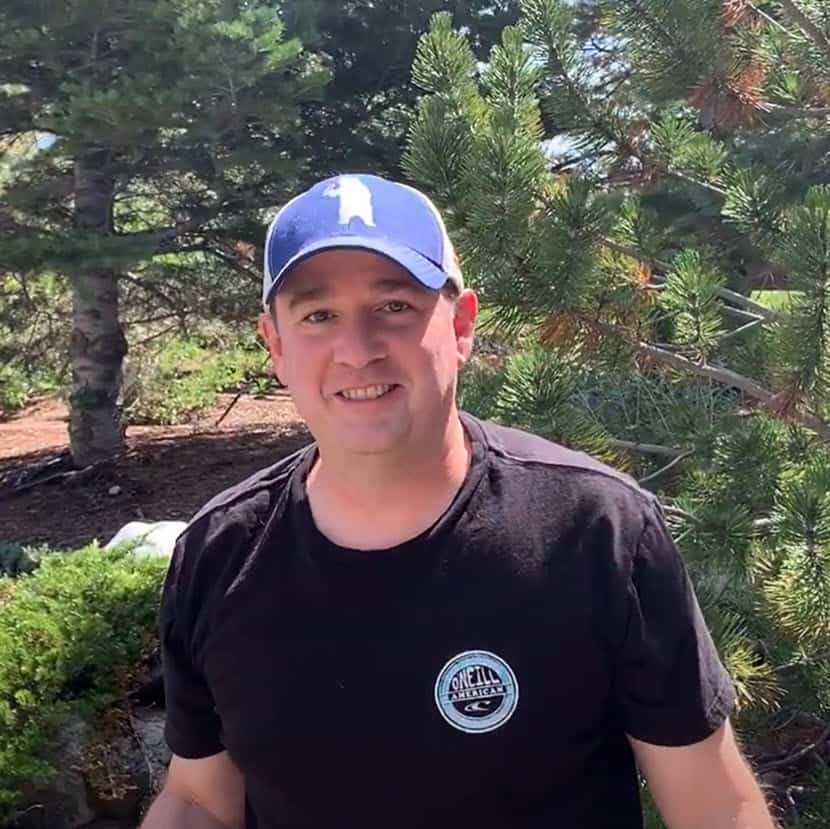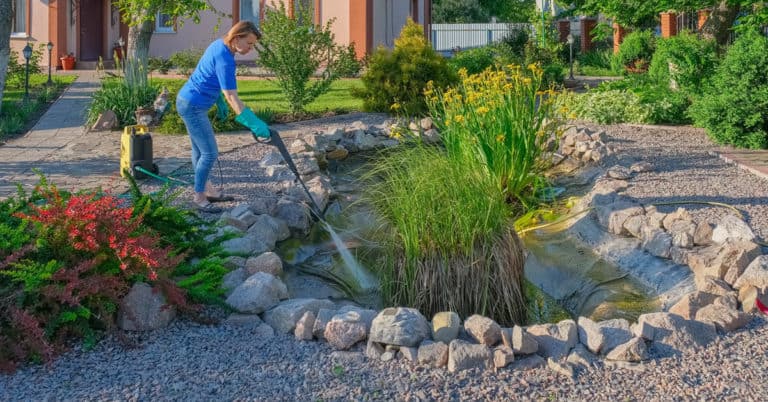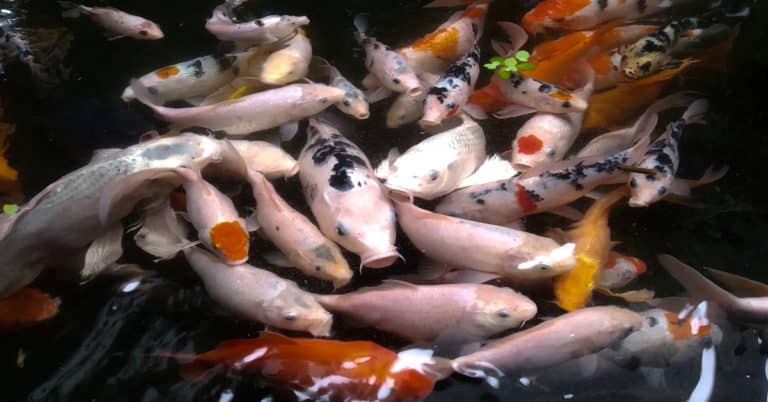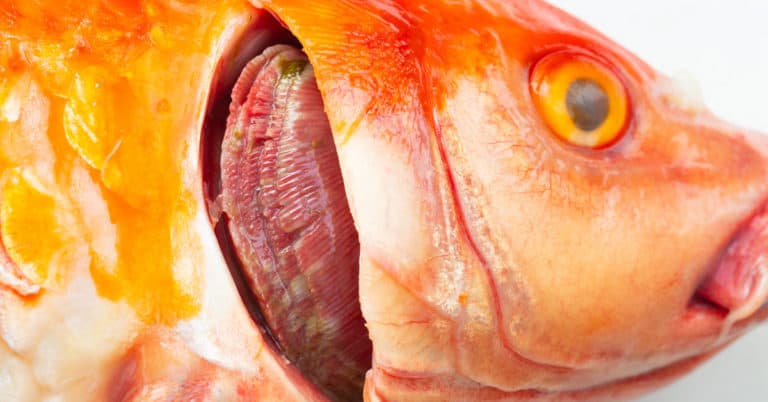As a koi owner, you want to keep your pond water crystal clear so that you can enjoy the bold and beautiful colors of your prize fish. Unfortunately, koi can be as messy as they are captivating. It doesn’t take long for debris to build up and affect water clarity.
While cloudy or murky water isn’t often dangerous for fish, it can make it difficult to enjoy the pond that you’ve worked so hard to build.
We'll get into the steps for properly keeping your water clear in this article. If you're not a do-it-yourselfer and would like to bring in someone else to keep your water pristine, you can find a koi pond service company near you in our providers directory.
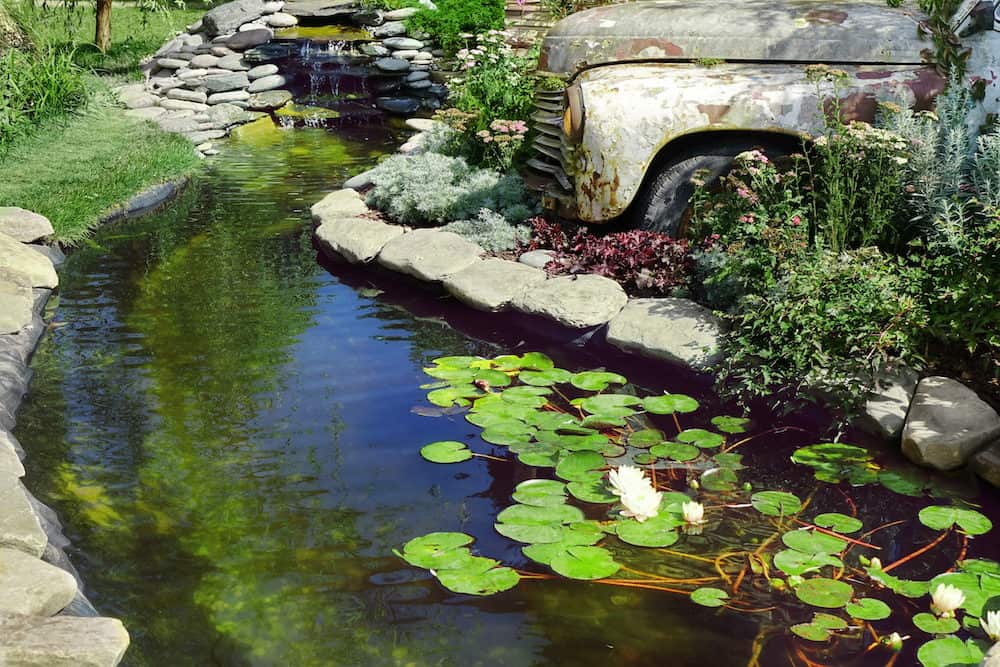
More than once, my own backyard pond has looked a little bit on the dirty side. Fortunately, I’ve found that there are plenty of different ways to protect pond water clarity as long as you can pin down the root of the issue.
In this guide, I’ll discuss what causes murky water, how to clean it, and how to keep koi pond water clear going forward.
If your pond is looking murky, the first step toward crystal clear water is to figure out what’s behind the change. Once you know the main culprit, you can figure out how to make koi pond water clear.
New koi ponds almost always start off cloudy. It can take years for water to finally settle and achieve the clarity that you want.
Introducing pond fish to a new system too early can exacerbate the problem, as it disrupts the balance of beneficial bacteria and may lead to waste buildup.
It’s completely natural for debris to build up in a pond over time. Organic matter from excess food and fish waste can begin to cloud up the water, making it difficult to see through.
Overfeeding your fish can speed up the rate at which your pond water gets murky. Excess food that goes uneaten contributes to unwanted particles floating in the water. Fish will also produce more waste than usual.
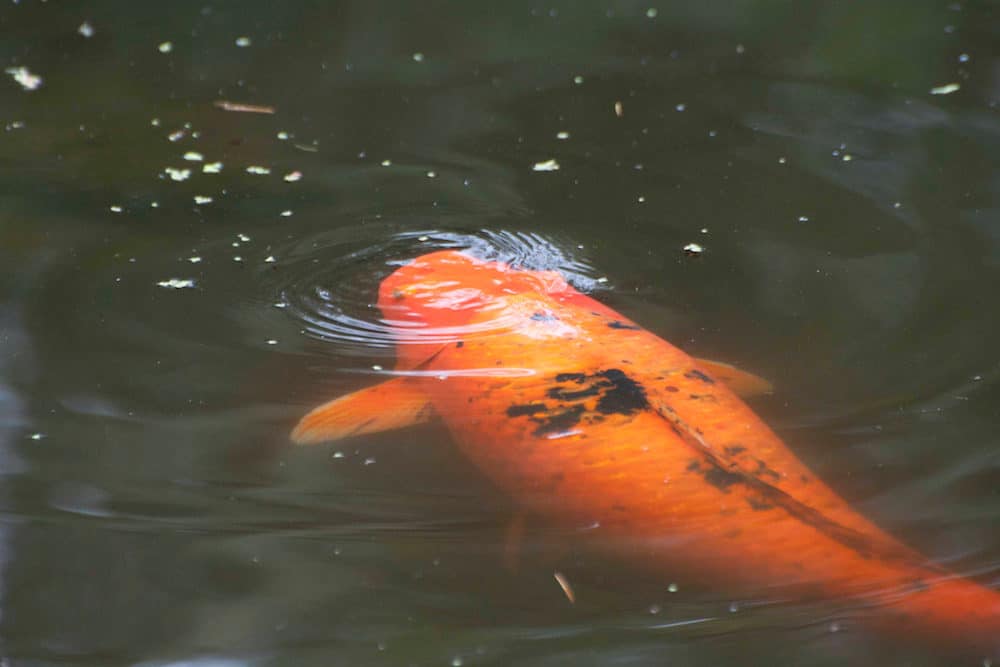
Debris may also enter your pond from outside. If you don’t have riprap, or a rock barrier, around your pond, you run the risk of soil runoff muddying your water. In areas with heavy foliage, leaves may build up in the water.
Algae is a common problem for koi pond owners and can lead to murky and possibly even dangerous water.
An excess of nutrients such as nitrogen and phosphorus can easily lead to a planktonic algae bloom. These nutrients often come from the runoff from lawns, fertilizers, and septic systems.
Pond algae often lead to green pond water, sometimes coming in a thick enough layer to make water completely opaque.
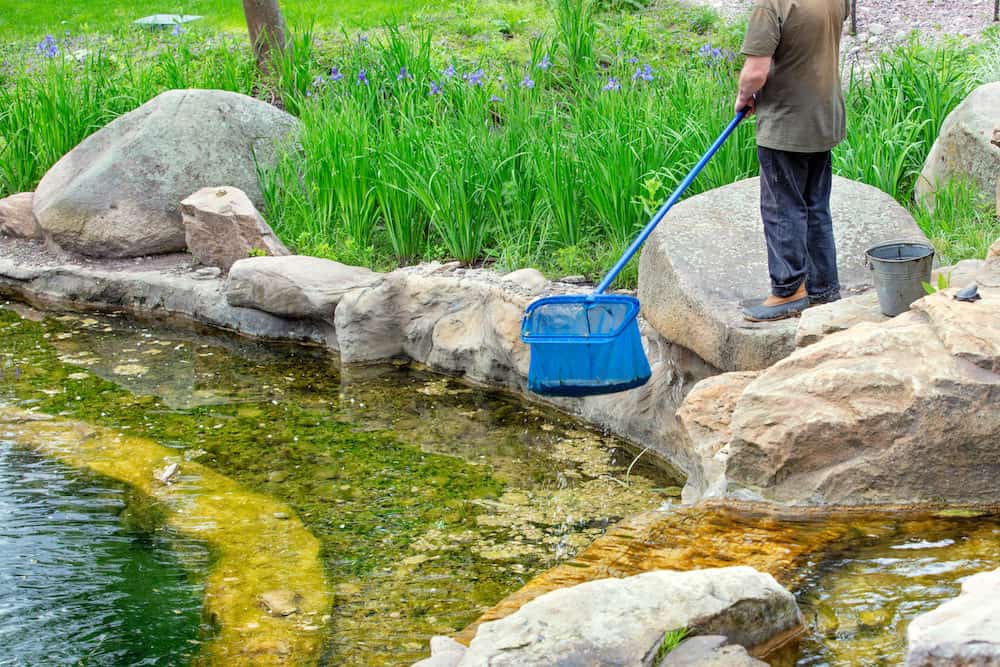
A large enough algae bloom can be dangerous to your koi fish. It can deplete the oxygen in your pond water, leading to developmental delays, breathing difficulties, and eventually death.
Even after you treat an algae bloom, the remaining organic matter can murk up your pond water. Dead algae often give water a gray, cloudy appearance.
All ponds need a supply of beneficial bacteria to help break down organic waste and support the local nitrogen cycle. However, under the right conditions, even beneficial bacteria can grow out of control.
Bacterial blooms are especially common in new and poorly established ponds or after a water change in mature ponds. In most cases, blooms are temporary and will go away on their own.
You may be accidentally introducing debris into your aquarium by adding dirty rocks and sick plants to your setup.
While koi fish appreciate plenty of rocky crevices where they can hide and play, dirty stones can wreak havoc on your water clarity. Unclean rocks can hide vast amounts of dirt, talc, sediment, and more that come loose in the water.
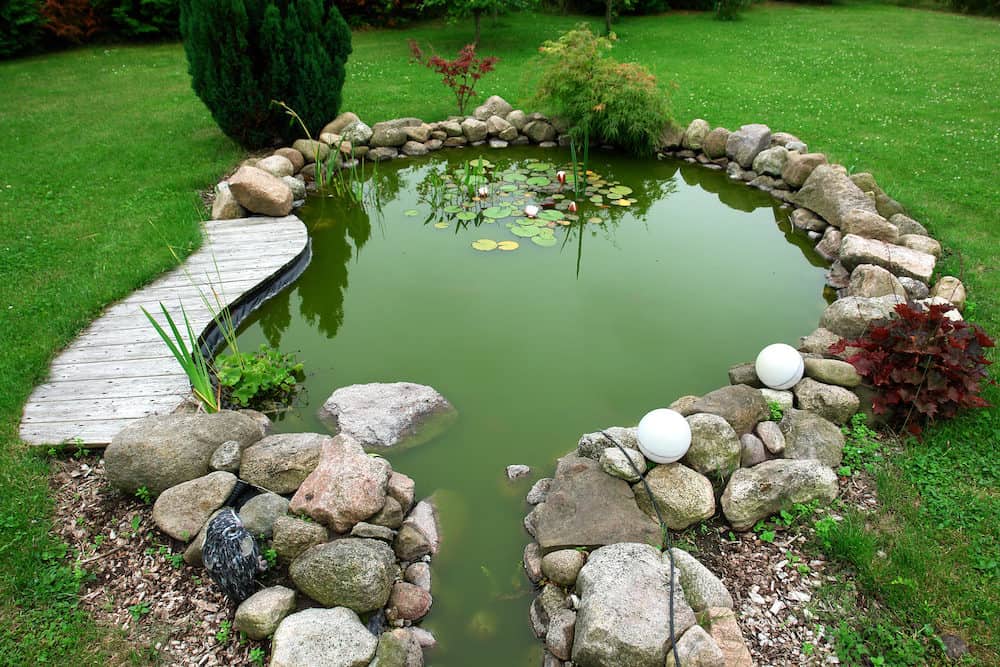
An old, sick, or decomposing pond plant can also dirty up water. What’s more, an excess of rotting organic sediment can disrupt the delicate nitrogen cycle within your tank and potentially cause harm to your koi population.
Once you know what’s causing your cloudy pond water, you can figure out the best course of action for treating it.
Here, I’m going to show you how to get crystal clear koi pond water without using any harsh cleaners or chemicals that may harm your fish.
All aquatic ecosystems need beneficial bacteria to help break down organic matter into components safe for plants and fish.
Bacteria are crucial in the nitrogen cycle, where ammonia and nitrite get turned into less harmful nitrates. Without healthy colonies of beneficial bacteria, ammonia will rise to dangerous levels within your pond.
It’s important to cycle new ponds before introducing a population of fish. Otherwise, there will be no established colonies of bacteria to process their waste.
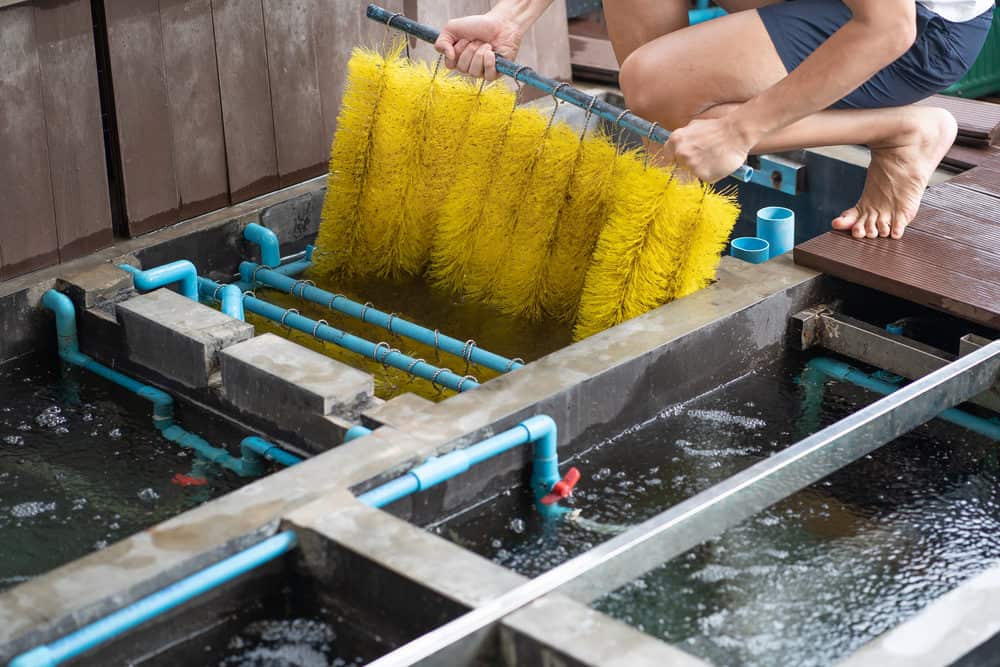
Cycling a pond involves circulating water using a pump to aerate the water and introduce bacteria. Generally, you should allow your pond to cycle between six to twelve weeks before introducing fish.
If needed, you can introduce beneficial bacteria into your ecosystem by using commercial pond probiotics.
Check ammonia and nitrite levels periodically as you cycle to figure out when to add your fish. Both should be virtually undetectable before your pond is ready to stock.
If a mature or properly cycled pond begins to show signs of murky water, it’s a good idea to test the water quality.
You can use a store-bought testing kit to determine if an imbalance in your water may be responsible for poor clarity. Most all-in-one kits test for common problem areas, including pH levels as well as ammonia, nitrite, and phosphate composition.
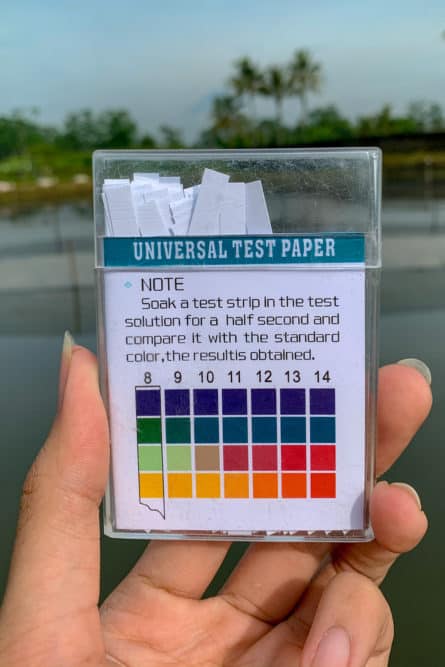
Ideally, your pond water should have an ammonia content of close to zero. Any higher, and it may cause ammonia poisoning in your koi population. High levels of nitrites can also cause health issues, while phosphate may encourage dangerous algae blooms.
The pH of your pond water should measure somewhere between 6.5 and 8.5. Koi fish thrive best in neutral water and cannot tolerate large pH fluctuations.
If your testing reveals any imbalances in your pond system, try solving the issue to see if it helps to clear up your pond water.
Having the right filtration system can make a world of difference when it comes to clear pond water.
Ponds that have undergone a cycling period should have a natural biological filter made up of beneficial bacteria that remove harmful organic compounds from the water. Most of these bacterial colonies live on the pond floor, but you can also introduce them to your filter box for better filtration.
Installing a mechanical pond filter removes larger particles and sediment that can make water appear cloudy. It’s important to use a filter box that fits the size of your pond.
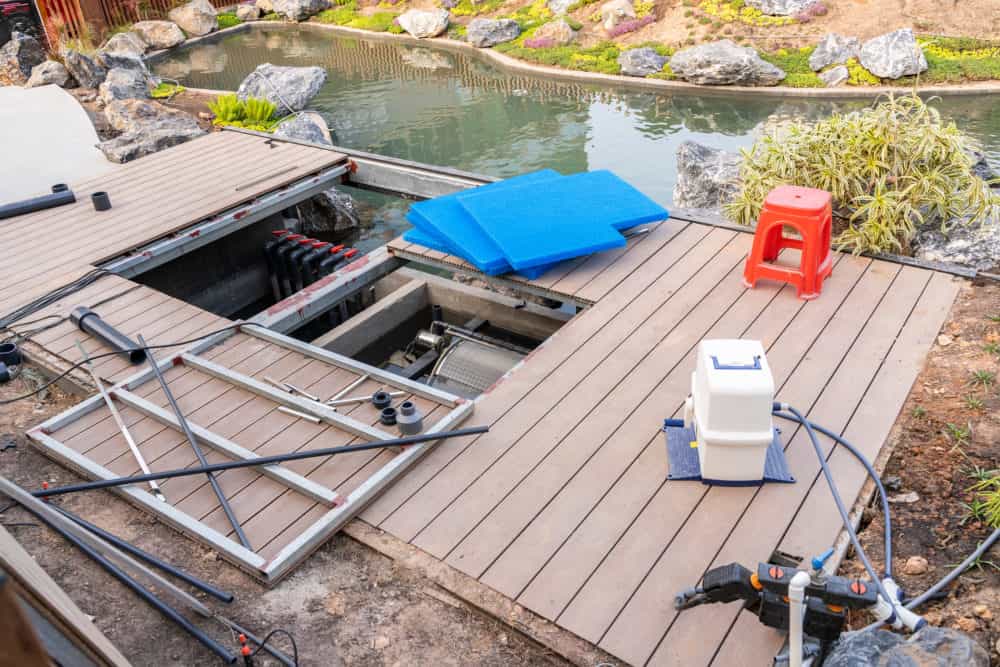
In general, it’s best to choose a filter that can handle 1.5 times the volume of water in your pond. If you have a large population of koi fish, you may need an even larger filter to handle the excess waste.
If your filter isn’t removing enough particulate matter, you may be able to add an insert such as activated carbon or poly-wool to your setup. The fine fibers in these materials trap debris more effectively for even cleaner water.
If you’ve just treated an algae bloom, a filter is one of the best ways to remove the dead organic matter from your pond. You may need to increase your cleaning schedule to ensure that the extra debris doesn’t clog your pond filters.
Over time, organic matter can build up on the bottom of your pond to form a thick sludge. Fish food, waste, soil runoff, and even leaves falling into your pond can contribute to sludge formation.
Not only does this buildup cause murky water, but it can also deplete oxygen and increase levels of dangerous compounds such as ammonia.

The best way to remove sludge from your garden pond is by using a pond vacuum. Just like a regular vacuum, a pond vacuum uses suction to help you remove dirt, debris, and algae, as well as sludge.
It may be a challenge to dislodge debris with a vacuum if it's been a while since your last pond cleaning. In these cases, you may want to soften up sludge with a dedicated removal product before vacuuming.
If you’re having trouble with persistent algae, you may want to consider using barley straw to prevent growth. Barley straw offers a safe, natural, and fish-friendly way to prevent new algae blooms from growing in your pond.
While barley straw offers a simple and effective way to prevent algae growth, it's a long treatment process. It takes around four to six months for the straw to decompose and pond owners to see the results they want.
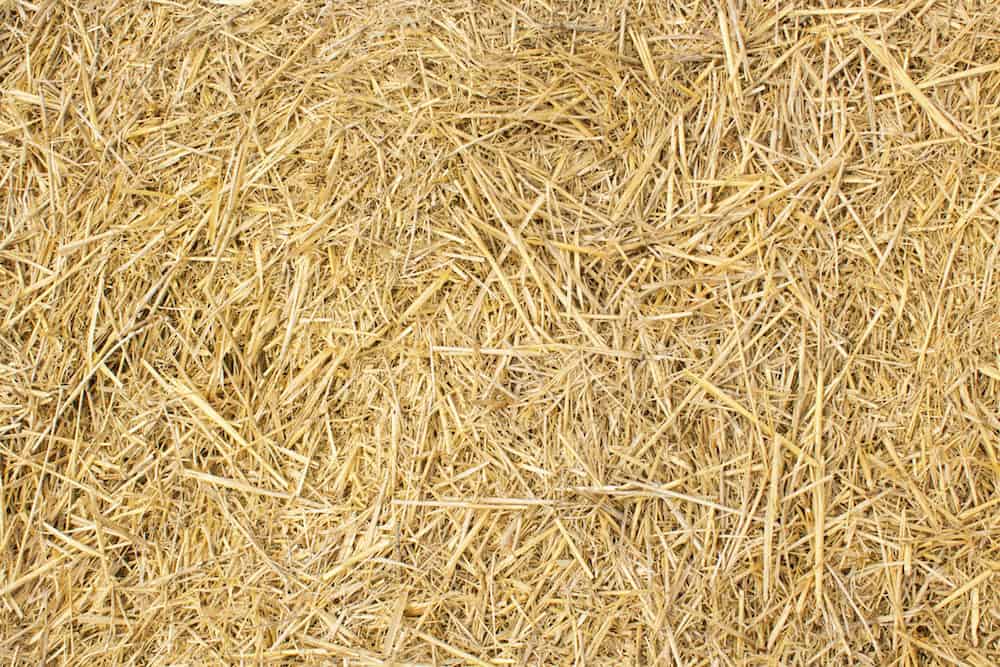
Treat ponds with barley straw by spreading dry material over the surface of the water. There should be plenty of space for oxygen to flow.
The best time to treat your pond with barley straw is before algae begin their peak growth period. Because most varieties grow best in warm weather, you should use barley straw in the springtime before it starts to heat up outside.
Salt has long been one of the top go-to pond treatments for koi owners with murky water. It’s a safe, natural way to remove dirt and debris suspended in the water. Salt attracts unwanted particles, binding with them and removing them from the solution.
Many pond owners choose to add Epsom salts, which contain magnesium and sulfur compounds, to help clean water. Some prefer limestone or alum salts instead, as these are better at capturing large particles such as dirt and clay.
You can also safely add gypsum salt to most pond water. As a neutral salt, you don’t risk disrupting your pond’s pH and causing further complications for your koi population.
Pure, non-iodized salt offers the added benefit of supporting koi health, particularly during the winter months. Koi fish stop naturally producing salts as it grows colder, and so an artificial supply can keep your fish healthier and more energetic.
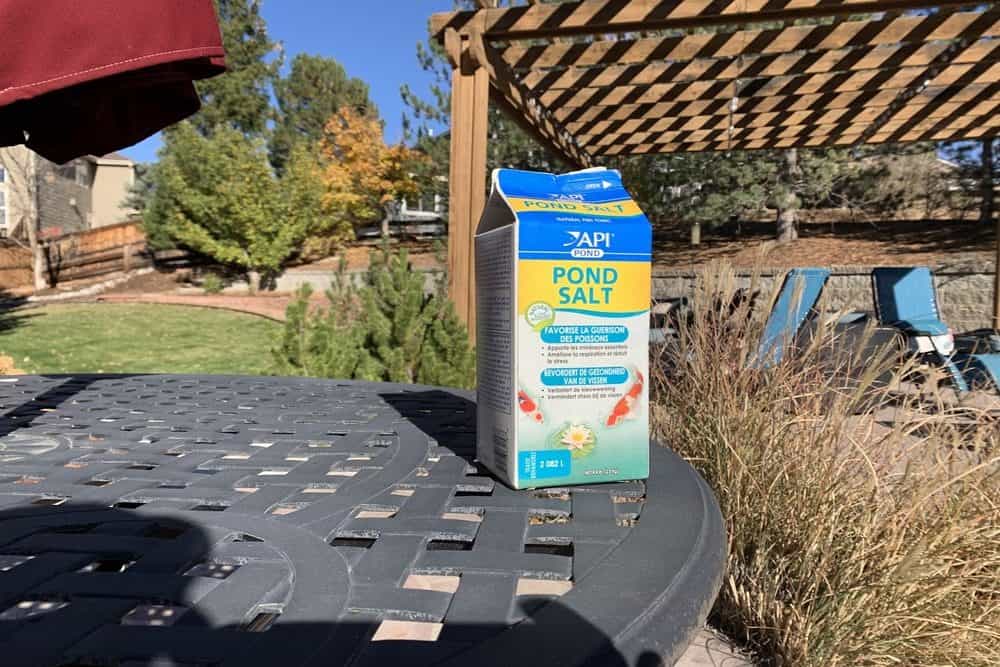
Keep in mind that adding too much salt to your pond at once can be deadly for your fish. Doing so can cause lethal dehydration in freshwater species such as koi.
Always dissolve salt in a separate container of water before adding it to your pond. Doing this prevents potentially dangerous salt buildup at the bottom of your pond, which can harm plant and fish life alike.
Be aware that adding salt to your tank in even small amounts may negatively impact aquatic plants in your underwater landscape.
It takes around 0.3% salinity to effect change in your pond without harming your fish. However, plants such as lilies, lotus, and water hyacinths can't handle concentrations this high and may need quarantining when adding salt.
Plants such as cattails, floating hearts, and zebra rush are slightly hardier and can generally tolerate increased salt levels during treatments.
No matter how successful your pond treatment might be, without proper long-term maintenance, you’ll be back to murky water in no time.
Here, I’m going to discuss how to keep koi pond water clear long after treating it.
Overfeeding fish is one of the top mistakes koi owners make that can lead to a dirty, murky pond. Excess food settles at the bottom of the pond, contributing to sludge and sediment buildup, while fish also produce more waste than usual.
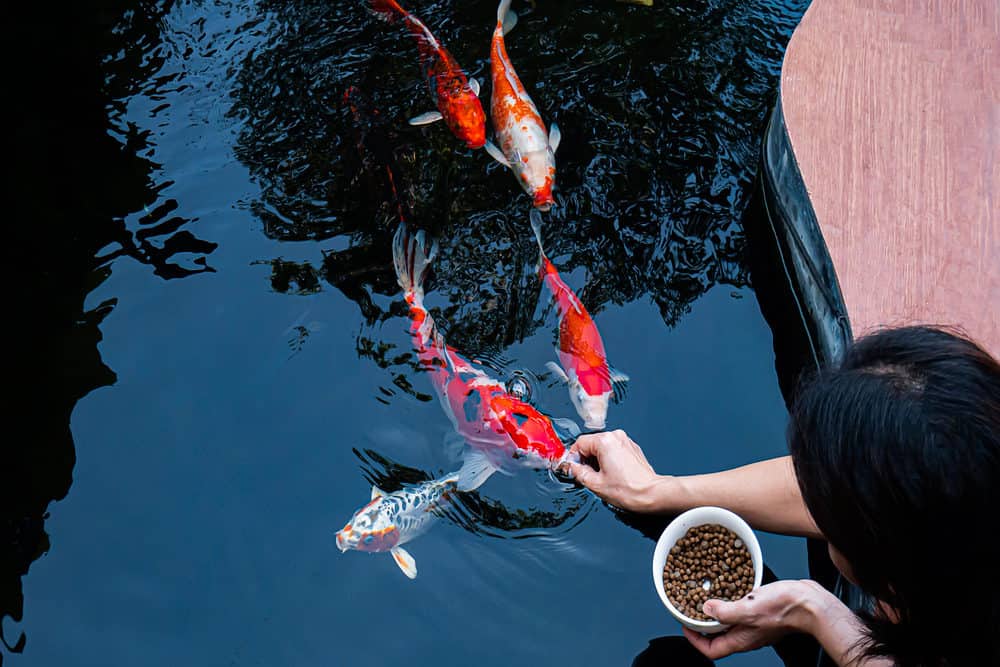
Feeding frequency should depend primarily on water temperature. In cold conditions, koi fish conserve energy and thus don’t need to consume as many calories.
In conditions below 50˚F, you don’t need to feed your fish more than once to twice per week. At temperatures of around 80˚F, though, you should increase feedings to as often as two to three times per day.
Rocks and pond decor can release silt, talc, and other sediment into your pond water if you’re not careful. The best way to avoid this is by thoroughly cleaning pond decor before introducing it to the tank.
Soak rocks and other items in cold, clean water for several hours to several days until they run clean when washing. Avoid using any soap or harsh chemicals.
